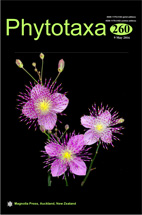Abstract
A new arbuscular mycorrhizal species, Acaulospora papillosa, was isolated from the biological reserve ‘Saltinho’ within a coastal tropical Atlantic forest of the ‘Mata Atlântica’ biome in Pernambuco State of Northeastern Brazil. It was trapped and propagated as single species cultures on Zea mays. The spores are yellow white to light yellow to creamy, globose to subglobose, 69–100(–110) × 65–93(–101) µm. The spore surface is roughened as crowded with fine papillae, which are formed on the outermost, evanescent to semi-persistent spore wall layer. These papillae may disintegrate or completely disappear as the spores age and the layer becomes completely evanescent. Phylogenetically, the fungus clusters together with several small-spored Acaulospora species having smooth spore surfaces, such as A. delicata, A. longula, A. morrowiae and A. mellea. In the Acaulospora clade, A. papillosa is the third taxon known to have a roughened spore surface, in addition to A. dilatata and A. rugosa. The phylogenetic placement of A. rugosa is provided, together with colored illustrations of the spore morphology. The isolation of A. papillosa from such protected nature reserves as ‘Saltinho’ further supports the need to protect these areas and determine the biodiversity of beneficial microorganisms.

